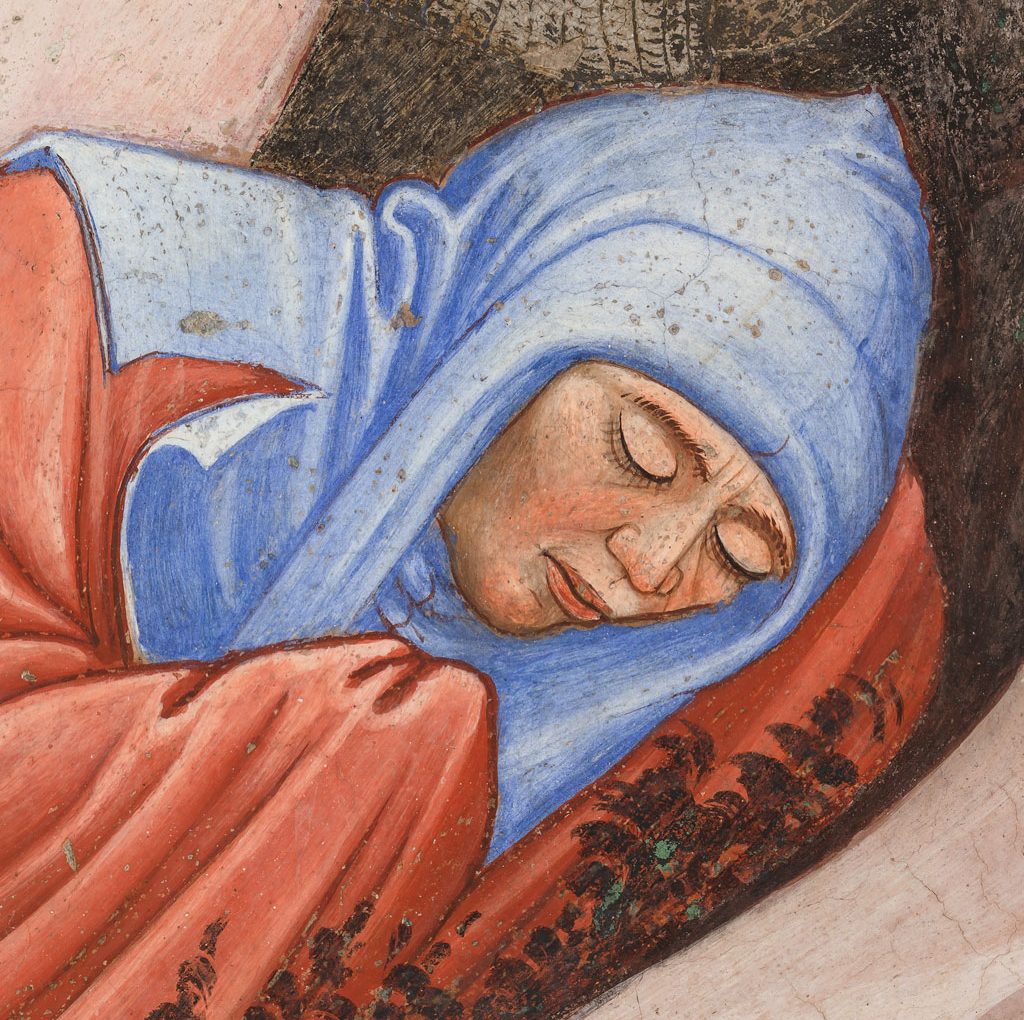Rocca di Vignola, Cappella Contrari, parete nord: “Resurrezione di Cristo e Discesa al Limbo”. Questa parete è caratterizzata da una particolare rappresentazione della Resurrezione che introduce a un altro tema del pensiero di Gioacchino da Fiore, quello della riconciliazione tra cristiani ed ebrei e della conversione di questi ultimi prima dell’avvento dell’età dello Spirito Santo. L’evangelista associato all’episodio è Marco, identificato dalla frase Recumbentibus undecim (Apparve agli undici mentre erano a tavola). Il simbolo del Cristo con il vessillo crociato è quello della Resurrezione. Oltre a Maria e ai dodici apostoli che assistono all’ascesa al cielo di Gesù, compaiono a destra tre personaggi con abiti da sacerdoti. Il riferimento, in questo caso, è al Vangelo di Nicodemo, un apocrifo in cui si narra che il giorno successivo alla resurrezione di Cristo, tre uomini, Adas, Finee e Aggeo (rispettivamente uno scriba, un sacerdote e un levita), si recarono al Sinedrio, il tribunale supremo della giustizia ebraica, per testimoniare la visione di Cristo risorto: il loro racconto avrebbe dunque spinto il popolo ebraico a partire alla ricerca di Gesù. Al centro si nota il Buon ladrone Disma, in basso a destra Gesù prende per mano Adamo. Ai piedi di Cristo, le porte dell’Inferno rotte e la figura del Diavolo a terra. A sinistra, invece, il serpente che muta pelle è simbolo positivo di rigenerazione.
Vignola Stronghold, Contrari Chapel, north wall: “Resurrection of Christ and Descent to the Limb”. This wall is characterized by a particular representation of the Resurrection which introduces another theme of Gioacchino da Fiore’s thought, that of reconciliation between Christians and Jews and the conversion of the latter before the advent of the age of the Holy Spirit. The evangelist associated with the episode is Mark, identified by the phrase Recumbentibus undecim (He appeared] to the eleven while they were at the table). The symbol of Christ with the Crusader banner is that of the Resurrection. In addition to Mary and the twelve apostles who witness Jesus’ ascent into heaven, three men appear, dressed as priests, on the right. The reference, in this case, is to the Gospel of Nicodemus, an apocryphal one in which it is said that the day following the resurrection of Christ, three men, Adas, Phinee and Haggai (respectively a scribe, a priest and a Levite), went to the Sanhedrin, the supreme court of Jewish justice, to testify to the vision of the risen Christ: their story would therefore have prompted the Jewish people to set out in search of Jesus. In the centre we see the Good thief Disma, at the bottom right Jesus takes Adam by the hand. At the feet of Christ, the broken gates of Hell and the figure of the Devil on the ground. On the left the snake shedding its skin is a positive symbol of regeneration.
